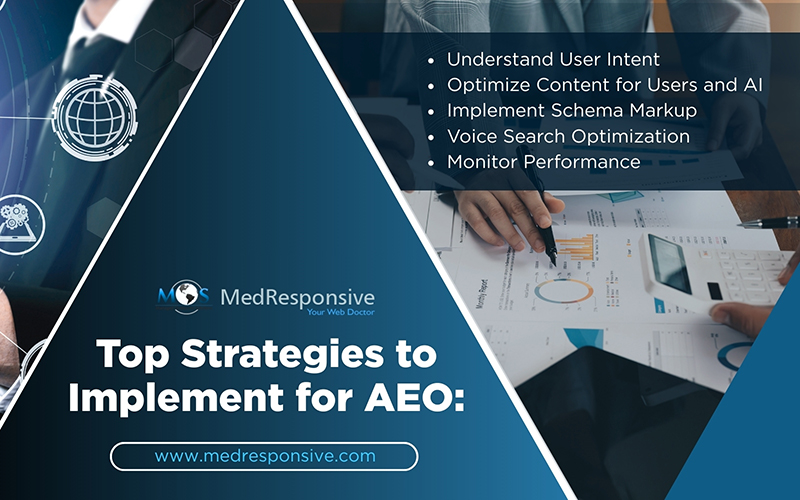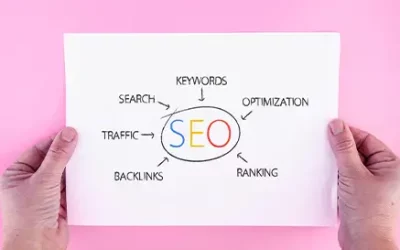For many years, search was typically limited to computers and smartphones, dominated by Google’s model of delivering ranked lists of links. Businesses that wanted a strong online presence had to optimize for search engines utilizing traditional strategies such as keyword targeting and link building. However, the advent of generative AI tools such as Google’s Gemini, ChatGPT, and Bing AI Chat has entirely reshaped how people find and consume information.
In this post-search era, generative AI answers user queries directly, reducing the need to click links. Users no longer have to type in, scroll, and click through websites in search of information for their queries. Instead, AI-driven systems interpret these questions and deliver immediate, synthesized responses across multiple formats, including voice, text, and visual data. Answer engines are now the new frontier of conversational, contextual, and multimodal information discovery.
This shift calls for a different approach to digital visibility as it is not just limited to rankings in conventional results. Instead of only competing for the top spot in a list of links, businesses now must also focus on Answer Engine Optimization (AEO). This new strategy that aims to make content discoverable and usable by AI-powered answer engines. To stay relevant in this evolving landscape, many companies are turning to affordable digital marketing services tailored to the demands of AI-driven search.
What is Answer Engine Optimization in SEO?
Answer Engine Optimization (AEO) refers to the practice of optimizing content in a way that allows answer engines to understand, extract, and deliver relevant information from your content instantly. Unlike traditional SEO, where the goal is to appear on search engine result pages (SERPs), AEO emphasizes on being selected by AI to provide concise and accurate answers for user’s questions. Using technologies such as natural language processing and machine learning, answer engines parse user intent and generate responses directly within interfaces, often bypassing the need for users to visit the source page.
The key characteristics of AEO are as follows:
- Direct answers: Content is structured to provide straightforward responses to specific and defined questions.
- Structured data: Utilization of schema markup to help search engines understand and present content effectively.
- Conversational tone: Writing in a manner that aligns with natural language and voice search patterns.
- Focus on user intent: Prioritizing content that addresses the underlying intent behind user queries.
Why AEO Matters Now
Let’s go through the key reasons that have made AEO a top priority for businesses:
- Decline in click-through rates: As AI increasingly delivers instant results, fewer users click on links, leading to zero-click searches. By targeting prominent AI-generated responses, brands can improve visibility.
- Growing use of AI assistants: With the dominance of rich snippets, AI summaries, and answer boxes, more users rely on AI to summarize, recommend, and guide their decision-making process.
- Shift in user behavior: People expect answers, not just search results with listings. Voice recognition technology and multimodal deliver personalized responses for specific user queries.
Best Practices for AEO in 2025
Implementing an effective AEO strategy doesn’t require companies to start from square one as AEO is built on the basic principles of SEO. SEO specialists can adapt their current SEO strategy to include optimization for answer engines. Here are the core steps that can be implemented by brands:
Understand User Intent
Understanding user behavior through keyword research is the starting point of AEO. Traditional keyword optimization alone is not enough. AI engines rely heavily on semantics, which is the meaning and context of your content rather than keyword density. Use tools such as Google’s “People also ask”, Keyword Planner, forums in your niche, internal site search data, or even customer support logs to identify user questions. Avoid writing for keywords and instead, aim to write with meaning:
- Replace keyword stuffing with concept coverage.
- Use related but varied phrases and synonyms naturally within the content to signal topic relevance.
- Introduce key terms early, then elaborate using examples or use cases.
As AI is designed to serve user intent as precisely as possible, your content must demonstrate topical depth while remaining tightly focused on the specific query.
Create and Structure Content for Users and AI
Develop high-quality, authoritative content tailored to your target keyword terms that provide clear and relevant explanations for user queries. Position the answer immediately below the question, ideally within the first sentence or two. Aim for clarity and simplicity in your sentence structures without diluting the depth of information. Break down your content into easily readable and scannable format using:
- Headings (H1, H2, H3) to organize topics
- Bullet points and numbered lists to highlight steps or elements
- Short paragraphs that answer a single idea
A clean and predictable structure increases the chances that AI engines will identify and extract your answer correctly.
Implement Schema Markup
Schema markup is a type of structured data added to your page code to help search engines understand the context of your content. Schema.org provides various types of structured data in the form of code snippets that can be applied to your site’s HTML. Markup should reflect the actual on-page content and be validated using tools like Google’s Rich Results Test. It won’t guarantee a featured answer, but it signals structure and intent, both essential for AEO.
For AEO, the most useful schema types include:
- FAQ
- Q&A
- How To
- Article
- Organization/Person (for establishing authority)
Adding this information can significantly increase the chances of your content appearing in formats such as featured snippets, knowledge panels, and answer boxes.
Voice Search Optimization
With the increasing use of voice assistants, optimizing for voice search is a necessary part of AEO. Voice queries tend to be longer and phrased as natural questions, so your content should match the conversational tone where appropriate. Avoid technical jargon in your content unless you’re targeting expert audiences. Consider the following tips:
- Writing headers in full-sentence question form (e.g., “How do I update my privacy settings on Chrome?”)
- Optimize for mobile devices as voice search is the dominant search type on smartphones.
- Avoiding overly complex sentence structures or nested ideas that may confuse both AI and users.
Well-structured voice-optimized answers have a higher chance of being selected by AI assistants for read-aloud responses.
Monitor Performance
AEO is not a one-time implementation process; it requires continuous review and data-driven decisions to be impactful. Publishers can gauge the effectiveness of their AEO strategies using tools such as Google Search Console and Analytics to track KPIs. Monitoring content’s performance in answer-focused environments is essential to understand if it meets user needs:
- Featured snippet capture rates
- Impressions vs. clicks (especially for zero-click queries)
- Voice assistant traffic
- Inclusion in AI-generated summaries or answers
Based on the above performance insights, identify the underperforming content that requires improvement. Refine answer formats, update outdated pages, and identify new questions to target. As answer engines evolve, and your content should evolve with them.
Partner with SEO Experts to Dominate Search
AEO is not about replacing SEO, but about adapting to the next phase of information retrieval. Outsourcing digital marketing services is a smart move to equip your business to deliver results and stay discoverable in today’s AI-driven search landscape. As search engines are evolving beyond simply showing a list of websites, the future of search isn’t just limited to web listings in the traditional sense, it’s about answers. If your content isn’t structured to be understood, extracted, and presented by answer engines, it risks fading into the background. Brands and content creators who adapt to this shift early by collaborating with SEO specialists will stay visible, achieve conversions, and position themselves as trusted sources of information.





